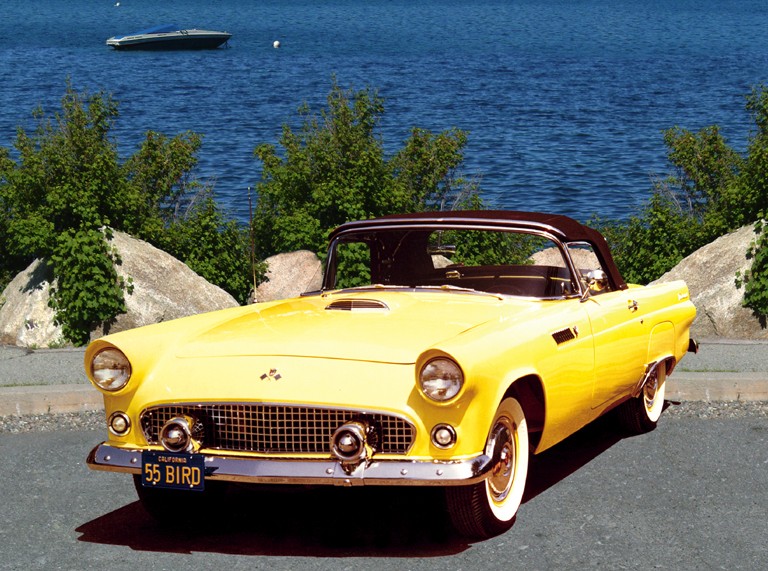The Ford Thunderbird, an iconic symbol of American automotive design, emerged in February 1953 as Ford’s answer to the Chevrolet Corvette. Moving from concept to prototype in roughly a year, the Thunderbird made its public debut on February 20, 1954. Ford marketed the Thunderbird as a personal luxury car, emphasizing comfort and convenience over outright sportiness. For owners dedicated to preserving these classic vehicles, finding the right Thunderbird Car Parts is essential to maintain their beauty and performance.
1955-1957 Thunderbirds: The Original Two-Seater Legacy
The initial 1955 Thunderbird established the model’s identity. In 1956, subtle refinements appeared, most notably the continental-style rear bumper, designed to increase trunk space, and the optional porthole window in the removable hardtop. The year also marked the introduction of a powerful 312 cubic inch Y-block V8 engine, enhancing the car’s performance. 1957 brought further styling updates, including a reshaped front bumper, a larger grille, and more pronounced tail fins with bigger tail lights. The interior was also revamped with a new instrument panel featuring round gauges within a single pod, and the spare tire was relocated back into the trunk, streamlining the design and functionality. For enthusiasts restoring these models, sourcing authentic thunderbird car parts from these years is crucial for historical accuracy.
1958-1966 Thunderbirds: Expanding the Thunderbird Family
Beginning in 1958, the Thunderbird underwent a significant transformation, evolving into a four-seater model while still offering a soft-top convertible option throughout 1958 to 1966. This 2nd generation Thunderbird was considerably larger than its predecessors, built with a more robust uni-body construction. Styling changes included dual headlights, more prominent tail fins, and a bolder chrome grille. Under the hood, a new 352 cubic inch FE V8 engine provided ample power. 1960 saw another grille redesign and minor styling tweaks, along with the introduction of an optional manually operated sunroof for hardtop models. The dual-unit round taillights were replaced with distinctive triple-unit taillights.
The 3rd generation Thunderbird, launched in 1961, embraced a sleeker, bullet-like aesthetic. A new 390 cubic inch FE V8 engine became the standard powerplant. In 1962, Ford introduced a vinyl-roofed Landau option with simulated S-bars, and a sporty Sports Roadster package for convertibles. The Sports Roadster included Kelsey Hayes wire wheels and a fiberglass tonneau cover that created the illusion of a two-seat roadster.
The 4th generation Thunderbird, debuting in 1964, adopted a more squared-off, formal appearance. While retaining a similar grille design and dual headlights, this generation continued to be available as a hardtop, convertible, or Landau. 1965 brought functional upgrades like sequential turn signals and front disc brakes. A stylistic refresh in 1966 featured an egg-crate style grille and rear brake lights redesigned to appear as a single, unified unit. For each of these generations, finding the correct thunderbird car parts ensures that restorations are both authentic and high-quality.
Decades of Thunderbird Expertise
With decades of experience assisting classic Thunderbird owners since the early 1970s, we understand the nuances of restoring these cherished vehicles. Whether you’re seeking specific thunderbird car parts for a 1955 model or components for a 1966 edition, our team of experts is ready to help.
To find the parts you need, explore our online catalogs:
- Download our catalog
- Visit our online store for 1955-1957 Thunderbird parts
- Visit our online store for 1958-1966 Thunderbird parts
For personalized assistance or to place an order, call us toll-free at (800) 722-0009. Let us help you keep your Thunderbird legacy alive with the right thunderbird car parts.
